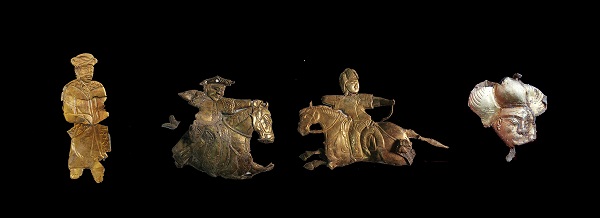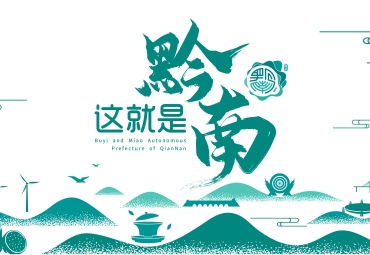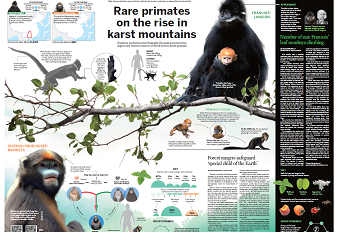Top 10 archaeological findings of 2020 unveiled

Figures made of gold foil, discovered at the Reshui graveyard site, Haixi Mongolian-Tibetan autonomous prefecture, Qinghai province, are believed to date to the Tang Dynasty (618-907). CHINA CULTURAL RELICS NEWS/CHINA DAILY
The city's ruins, across 1.17 square kilometers, have three layers of moats around a complex of residential compounds, sacrificial pits, altars, graveyards and other features. It is the highest-level city ruins of its time found along the middle and lower reaches of the Yellow River.
Another finding that excited archaeologists was a suspected wheel rut on the site. The earliest known confirmed rut in China is from 4,200 years ago, so the new finding, if confirmed, could rewrite the history of transportation, Li added.
In Zhoukou, also in Henan, barns that included fortifications at the Shizhuang site, dating from 2000 to 1700 BC, have provided the earliest evidence in China of government regulation of food storage and supply.
"It is a key clue for our exploration of the governance and social structure of early-stage states, and also aids our research on how a centralized dynasty was born and grew in China," said Xu Hong, a researcher at the Chinese Academy of Social Sciences' Institute of Archaeology.
The Top 10 lists, started by China Cultural Relics News, were first released in 1990. Interest in the list has moved beyond niche scholars, and it now attracts much attention.
京ICP备13028878号-8







 Overview
Overview Guiyang
Guiyang Guian New Area
Guian New Area Liupanshui
Liupanshui Anshun
Anshun Qianxinan
Qianxinan Qiandongnan
Qiandongnan Qiannan
Qiannan Zunyi
Zunyi Tongren
Tongren Bijie
Bijie Guizhou fosters cross-cultural bonds in Europe
Guizhou fosters cross-cultural bonds in Europe 18th Guizhou Tourism Industry Development Conference
18th Guizhou Tourism Industry Development Conference  Discover natural beauty in Qiannan, Guizhou
Discover natural beauty in Qiannan, Guizhou 

